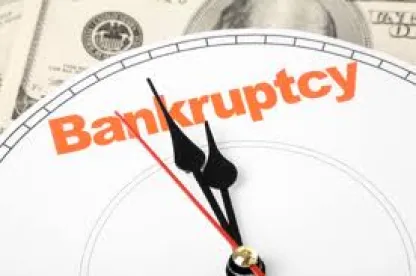On October 21, 2010, the Ninth Circuit overruled what many thought to be well-settled law, and held that a bankruptcy trustee does not have standing to pursue alter ego claims, at least in cases governed by California law. The court first held that California state law does not recognize a general alter-ego cause of action that allows an entity and its equity holders to be treated as alter egos for purposes of all of the entity’s debts. As a result, the court found that bankruptcy trustees (or debtors-in-possession) do not have standing to bring such a claim on behalf of a bankruptcy estate, even if the claim affects all of the bankrupt entity's creditors.
The opinion, Ahcom, Ltd. v. Smeding, 2010 WL 4117736 (9th Cir. 2010), overruled at least two other opinions, one entered in California Central District Bankruptcy Court and another entered by a Ninth Circuit Bankruptcy Appellate Panel, both of which held that trustees had the right – and the exclusive right – to bring general alter-ego claims on behalf of the estate when no particular injury was shown to a specific creditor. Both of the overruled opinions relied on a California state court case, Stodd v. Goldberger, 73 Cal. App. 3d 827 (1977), for the proposition that California recognized a general alter-ego claim.
The Ninth Circuit decision found that the other courts had misread Stodd, which the Smeding panel interpreted to mean that a trustee can only bring certain causes of action that directly injure the bankrupt entity, such as fraudulent transfer, conversion and theft, while it cannot bring others because a trustee is not an appropriate general representative of all creditors.
The relatively brief opinion in Smeding may have consequences in bankruptcy cases.
First, the decision may lead to an increase in alter-ego claims by creditors dissatisfied with the progress of, or their treatment in, a Chapter 11 case. These creditors may bring these types of claims against the debtor's principals to gain leverage in their attempts to alter the course of a bankruptcy proceeding or their treatment in it. Debtors may be able to delay such tactics with a Section 105 injunction, but that will only temporarily solve the problem, at least in the Ninth Circuit.
Second, the Smeding decision may mean that it is no longer possible to eliminate alter-ego claims through a release contained in a reorganization plan or in a settlement agreement between the estate and the principals (or other alter ego targets), since the estate is not the holder of the claims. Parties wishing to resolve alter-ego claims in the context of a Chapter 11 plan may be forced to resort to more creative solutions, such as the filing of a class-action alter-ego lawsuit by a creditor, which is then settled in the class action pursuant to class action rules concurrently with plan confirmation.
Third, bankruptcy trustees (and debtors-in-possession) in the Ninth Circuit may be limited to only three categories of claims they can pursue: (1) claims that the debtor could have brought outside of a bankruptcy proceeding and which are therefore property of the bankruptcy estate, (2) avoidance claims of creditors under applicable non-bankruptcy law, which the trustee may pursue under Section 544 of the Bankruptcy Code, and (3) claims specifically created by the Bankruptcy Code, such as preference actions (Section 547), fraudulent transfers (under Section 548) and unauthorized post-petition transfers (Section 549).



 />i
/>i

